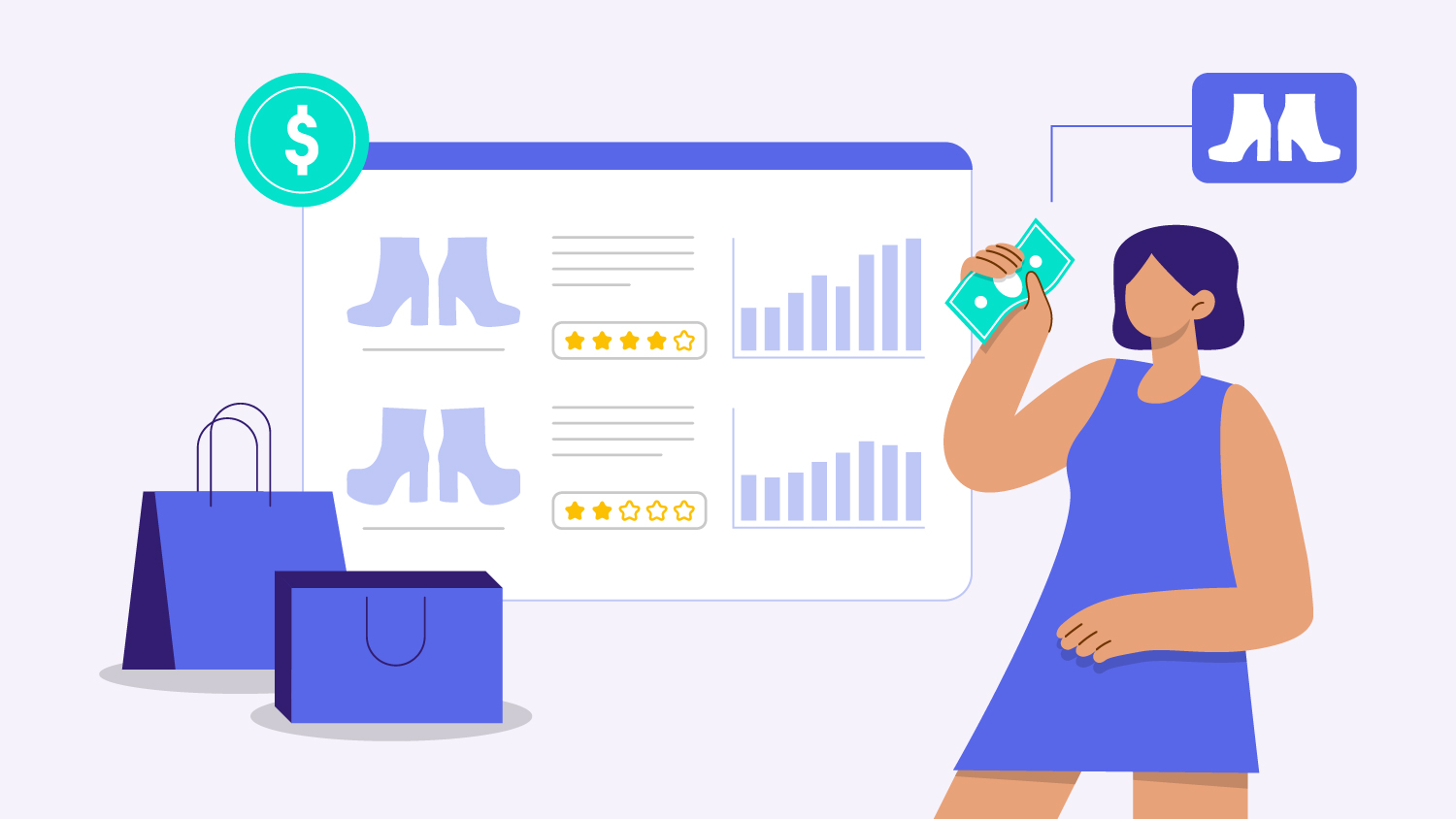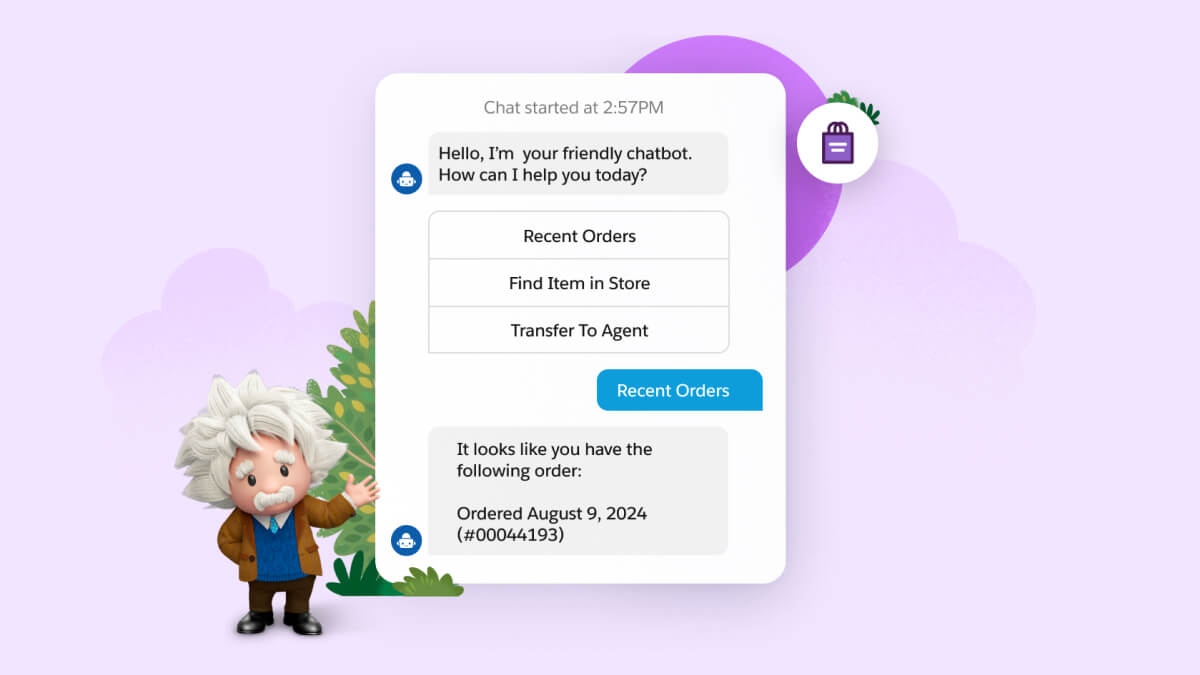Retailers — Use My Data to Make Me a Better Gift-Giver



Use your data to create frictionless shopping experiences that keep holiday shoppers coming back throughout the year.
Are you using your retail data from holiday shoppers effectively? The data you collect around special occasions and celebrations provides a wealth of information that, if used right, can make shopping easier for your loyal customers and gain you lots of new ones.
Each time someone buys a gift, it could provide endless opportunities for the retailer. With AI and CRM, you can use holiday shopping data to create great customer experiences and drive revenue all year long.
Here’s how I wish you would use my data:
- Use retail data from holiday shoppers to level up customer relationships
- Take the hints I’m dropping
- Make the data exchange worth it
- Ask me ‘who’ and ‘why’
- Welcome the recipient into the family
- Let gift card redemption be the first step
- Recruit us for your loyalty program
- Connect past and future purchases
- Grow my gift-giving universe
- Inspire me to treat myself
- Make returns a first step, too
- Let holiday data power year-round shopping
But first, a story: On our first Valentine’s Day together, I bought my then-girlfriend Aliya a bracelet from Gucci. She loved the bracelet, and Gucci became my Valentine’s Day go-to over the years. Before buying that bracelet, I was not a Gucci shopper. But Gucci saw an opportunity to build a relationship with me. They knew which items I browsed before purchasing the bracelet. They saw that I had it wrapped for Valentine’s Day and that I paid for express shipping. That left the marketing team quite a few breadcrumbs to follow up on later in the year.
Gucci continued to engage with me after that first purchase, sending product suggestions, announcements of new items introduced into the collection, and follow-up nudges, so the brand stayed at the top of my mind. And the following Valentine’s Day, buying Aliya another gift from Gucci was a no-brainer. Aliya became my wife, and every year I buy her additional pieces from that Gucci jewelry collection.
If tracking my data helps retailers inspire me to make good choices, I’m happy to supply them with all the data they need. But while some retailers are doing a great job of reminding and guiding me, some may be missing out on huge opportunities.
Turn Holiday Shoppers Into Loyal Customers
Use retail data from holiday shoppers to level up customer relationships
Gift-giving occasions are great opportunities for retailers to build a deeper relationship with me. You can learn who is meaningful in my life, how much they mean to me, and what interests them. I mean, Gucci learned something even my mum didn’t know – that I was dating someone special!
By tracking who and what I shop for, retailers can see patterns: Do I start browsing on a holiday- or other themed page of your website? Do I gravitate towards certain categories? Are there products I look at but don’t purchase? Does that mean I need some education on those categories? Or maybe just a little bit of motivation, in the form of a discount or free sample?
You can use generative AI with the retail data from holiday shoppers to identify these patterns, then curate a suggested list of items based on price, category, and store availability. Generative AI can also help you create and send personalized offers, through the channels where I engage the most, based on that list. The more I respond to those offers, the more your team learns about me and the more personalized and targeted AI-generated offers become over time. And it all starts with that very first holiday gift.
(Back to top.)
Take the hints I’m dropping
So how do you use holiday data to drive year-round purchases?
Let’s go back to that first Valentine’s Day I mentioned. In addition to the bracelet, I also wanted Aliya to experience one of my favorite places — Eataly, the massive food and shopping halls dedicated to living like an Italian — so I included a gift card.
Aliya used it for a cooking class. Then, in the weeks following the class, she made additional purchases at Eataly as she planned a dinner party where she’d recreate the dishes she’d learned to cook. The Eataly team realized she enjoyed Tuscan cooking based on her activity. In fact, they saw she liked to experiment with unique pasta types and infused olive oils, but was still undecided in the Illy versus Lavazza coffee rivalry. They also recognized she bought more around long weekends and holidays. Their followup offers to Aliya showed they understood what interested her most.
Eataly has become Aliya’s favorite place to try new ingredients for special meals. The Eataly team encouraged her by sending targeted offers throughout the year that built on her purchase history and preferences. Eataly’s outreach made her a loyal customer over time, not just someone who came in to redeem a gift card and was never seen again.
(Back to top.)
Here’s how you should use retail data from holiday shoppers to help customers shop all year long:
Make the data exchange worth it
In the classic movie “Jerry Maguire,” Jerry told his clients, “Help me help you.” In the case of gift shopping, I say to retailers, “Help me help you help me.” I’m happy to give you my data if you use it to make my shopping experiences easier, more intuitive, and more successful. This shows me you’re being thoughtful and deliberate with my data, and builds trust. And if you can turn me into a gift-giving superstar, please, take my birth date, marital status, list of hobbies, family members’ birthdays, favorite travel destinations, and my wife’s shoe size! Just be sure the value exchange is tangible.
(Back to top.)
Ask me ‘who’ and ‘why’
If a retailer thinks I am buying something that might be a present — like when I buy women’s clothing or request a gift box — they could ask me about the occasion. Asking if the purchase is for a birthday, anniversary, or wedding gives insight into a yearly celebration you can revisit over time. You also can add value to the data exchange by offering free gift wrap or a card to accompany the present. I gain value from giving the perfect gift, and the retailer benefits from the data it can use to help me with future gift purchases.
(Back to top.)
Welcome the recipient into the family
Show the recipient your brand’s value from the moment the gift is unwrapped. When you know a purchase is a gift, enclose a card asking the recipient to register for a warranty, join a user’s newsletter, or sign up for your loyalty club. Or maybe you can offer a QR code to request some complimentary products. Many times, the gift lends itself to accessories and add-ons, giving you a reason to send follow-up texts and emails suggesting discounts on related bundles. Proactive outreach helps you start engaging directly with the gift recipient from the moment they open the gift.
(Back to top.)
Let gift card redemption be the first step
When a consumer visits your website for the first time to redeem a gift card, it’s another opportunity to create a bond with new or one-time holiday shoppers. As gift recipients browse your website looking for inspiration, ask them to share their interests so you can suggest items they might like. This allows you to curate offers and provide a better interactive experience. AI can play a major role here by identifying the type of products, offers, and perks that will appeal to the shopper. This welcoming experience could result in the new shopper returning again and again for more inspiration.
(Back to top.)
Recruit us for your loyalty program
Incentivizing future purchases can help build customer loyalty. Recruit both the gift givers and recipients for your loyalty program and explain its benefits. Offer some special perks that are not available at other times to further entice shoppers to share information and join the program. Including a small gift or sample product with the exchange as a token of appreciation can further enhance the customer experience.
(Back to top.)
Connect past and future purchases
In the future, when I return to Eataly or Gucci right before Valentine’s Day or Aliya’s birthday, the retailer knows I might be looking to buy for her again. More importantly, they can suggest something perfect based on my previous purchases. That’s the power of AI, in-store CRM, and clienteling.
On my next visit to the store, associates can access my buying history and preferences. With this data, they can recommend products based on AI-generated insights. This seamless blend of technology and human touch elevates the shopping experience, making the shopper feel seen and understood, which can transform routine transactions into meaningful moments.
(Back to top.)
Grow my gift-giving universe
Gift-buying can be a difficult task, but if you make the process easier for the buyer, you can become their gifting partner. I bought presents for my wife, but I also buy presents for my sister, brothers, kids, nieces, and nephews. Brands that use CRM and AI to help me create and maintain wishlists, as well as track family members’ sizes and preferences, are invaluable in helping me remember and shop for special celebrations. If you position yourself as my concierge of gift-giving, I will turn to you first, every single time, regardless of your competitor’s convenience or lower price.
(Back to top.)
Make every day a holiday
Unwrap The 2024 Retail Holiday Planning Guide to learn our top tips for winning shoppers’ hearts and wallets during peak shopping moments all year long.



Inspire me to treat myself
As you understand more about the buyer, encourage them to buy something for themselves. If the data you have so far doesn’t indicate likes and dislikes, use what you do know — age, gender, marital status, or family size — to make suggestions. For instance, if I’ve recently bought a mountain bike for a teenage boy, you might want to reach out with a discounted bundle of camping gear or sports equipment at the start of summer vacation in case I share my son’s love of the outdoors. Based on how I respond to that offer, you’ll be able to further tailor promotions that will speak to my interests.
(Back to top.)
Make returns a first step, too
What happens if the gift recipient returns their gift? No worries — returns can still be a winning opportunity for retailers. Provide a frictionless returns experience by first ensuring your return-and-exchange policy is clear and easily understandable. Staff should handle exchanges with empathy and efficiency, prioritizing customer satisfaction. This also allows employees to engage with the shoppers and inquire about their interests to suggest alternative products. During the exchange process, suggest complementary items or upgrades, and offer exclusive discounts or special deals on new purchases. And don’t forget to mine the data from this exchange so you can use the information to better inform future offers for both the gift-buyer and recipient.
(Back to top.)
Let holiday data power year-round shopping
The retail data from holiday shoppers can help you deepen engagement with loyal customers and develop relationships with new shoppers. AI can make that process simpler and more personalized, increasing or creating loyalty with existing customers and the gift recipients. With thoughtful use of your CRM data, holiday shopping can truly be a gift that keeps on giving.
(Back to top.)





























